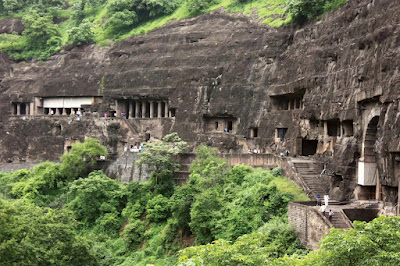In 2008, a group of Ukrainian miners stumbled upon what appears to be the imprint of an ancient wheel while excavating the coal coking stratum J3 ‘Sukhodolsky’ in the town of Donetsk. At a depth of 900 meters (2952.76 feet), the workers were surprised to find the wheel-shaped imprint in the sandstone roof of the tunnel they had just excavated.
Unfortunately, the imprint could not be safely or successfully cut out due to the nature of the sandstone in which it was embedded. As a result, the artefact remains in situ down the coal mine. Fortunately, Deputy Chief V.V. Kruzhilin took photographs of the rare imprint and exchanged them with Mine Chief foreman S. Kasatkin, who brought news of the find to light.
The Rostov region surrounding Donetsk is situated upon Carboniferous rock aged between 360-300 million years ago, and the widely distributed coking coals have derived from the middle to late Carboniferous. As a result, the fossilized wheel print may be around 300 million years old.
This would mean that an actual wheel became stuck millions of years ago and dissolved over time due to a process called diagenesis, where sediments are lithified into sedimentary rocks, as is common with fossil remains. The idea of a wheel existing millions of years ago is certainly a surprising one, and raises many questions about the evolution of human technology.
The testimony of S. Kasatkin, translated from Ukrainian, sheds some light on the discovery. According to his letter, the miners asked the mine director to invite scientists for a detailed examination of the object, but the director prohibited such talks and ordered them to accelerate work on passing through the section of lava and on fast ‘charging’ of the section with mining equipment.
The miners attempted to ‘cut-away’ the find with pick hammers, but the sandstone was so strong that they were afraid of damaging the imprint, and left it in place. At present, the mine is closed and access to the ‘object’ is impossible.
Without being able to definitively date the strata in which the fossilized wheel print was found, the photographs remain the only proof of this anomalous imprint. While it is difficult to verify the details beyond that which we have read, the photographs are certainly worth a mention. If the photographic evidence is legitimate, then one must question how a man-made wheel became embedded in such ancient strata when according to scientific orthodoxy, humans had not yet evolved.
While the discovery of a fossilized wheel imprint in a Ukrainian coal mine is fascinating, it also raises intriguing questions about human history and the timeline of our development. If the imprint is indeed genuine, it suggests that an advanced civilization may have existed on Earth millions of years ago, far earlier than currently accepted by mainstream science.
Of course, the authenticity of the artefact remains unproven, and many sceptics argue that it is simply a natural formation that resembles a wheel. The lack of physical evidence and the difficulties in verifying the discovery make it difficult to draw any firm conclusions about its origin or age.
Nevertheless, the idea that an ancient civilization might have developed technology far beyond what we currently understand is a tantalizing possibility that should not be dismissed out of hand. The fossilized wheel imprint is a reminder that there is still much we do not know about our planet's past and the forces that shaped it.
Perhaps one day, with advances in technology and new discoveries, we will be able to shed more light on the mysteries of the past and unlock the secrets of lost civilizations. Until then, the fossilized wheel imprint will remain a fascinating but enigmatic artefact, open to interpretation and debate.
Read more - Lost City of the Grand Canyon: An Ancient Egyptian Connection?








